Agriculture in Mexico City
Today I had the great pleasure to visit my friend Santiago on the chinampa. Or rather, visit the chinampa with him, who also lives in the city but has a number of plants he's taking care of there. So what exactly is a chinampa, you ask? It's a beautiful way of growing plants on artificially created "floating" islands on the lake, as they've been doing here in the Valley of Mexico for many generations, long before it became known as Mexico City. Though in the recent decades the chinampas became less and less important, they still exist, and provide a glimpse to the way food was produced of the past. In this post I want to introduce the chinampa as farming technique, as well as the Chinampa Tlicuili, to which I have good connections. Much of this information is taken directly from my blog.
A City Built on Water
Most of the area of today’s city used to be a big lake. Not a particularly deep one, though it was rather extensive, which in the dry season would break up into a network of several lakes, with soggy marshland in between. Thanks to its unique geographic position, with less than 300 km (186 miles) from the Gulf of Mexico but more than 2000 m (6500 feet) in elevation, the Valley of Mexico has always been home to rich waters. During the rainy season of the summer months the wind carries the moist air westwards from the Gulf. It hits the Sierra Madre Oriental, dumping most of the rain on its eastern slopes. What makes it across the mountains, however, ends up in this large basin. With an average rainfall of more than 800 mm (31 inches) a year this is still considerable.
Creating Farmland
Not surprisingly, all this water attracted a great variety of life, including the Homo sapiens, who soon figured out how to make the most out of it: They fenced in manageable plots of about 500-1000 m² (¼ acre) on the lake, and filled them with chapín (mud from the bottom of the lake), decomposing vegetation, and all types of organic material, until it would rise above the water level. To add stability ahuejote trees (a native willow) were planted along the edges. As the soil was continuously built up on the top, the plants received water straight from the lake below, making these chinampas (Nahuatl word meaning 'reed square') immensely fertile. Together with Spirulina, they could sustain the good quarter million inhabitants of the Aztec capital Tenochtitlan.
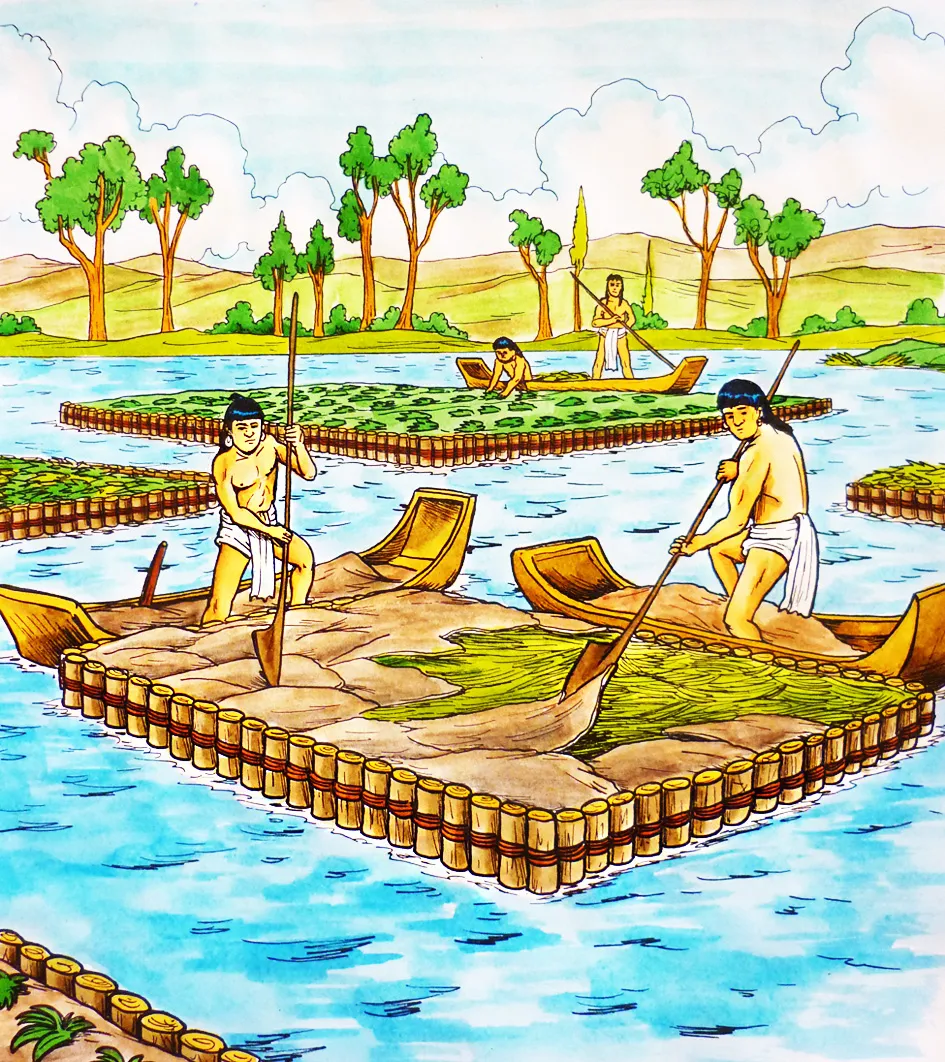
Up until the beginning of the 20th century they remained important in feeding the city. Then, with the advent of cheap energy, chemical fertilizers, and industrial farming, the chinampas faded into the past, not unlike many other traditional farming practices worldwide. At the same time the land itself faced various types of abuse, whether by being flooded with raw sewage in the 1950’s, or by being used as a dumping ground for debris from the major earthquake of 1985. Today the last remaining canals and chinampas are protected in a biological reserve, though urban sprawl is gnawing at the gates in the form of unofficial settlement.
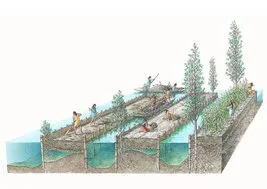
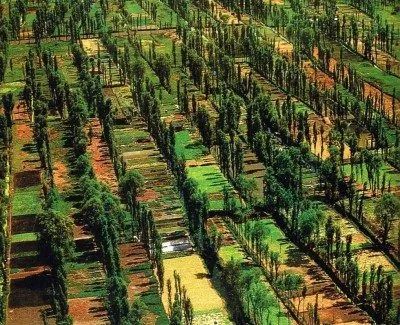
Chinampas Today
Still, inside the reserve one can easily get an idea of what it must have been like not even a century ago: Flat 'trajinera' boats being pushed along with poles on canals teeming with life. On both sides of the canal small homesteads growing flowers and veggies for the local market, as well as for the city, which back then was an entire day’s journey away.

Today there are still trajineras, but the water they travel on is far from clean. It is treated water from the city, sustaining some plants and fish, but nowhere the rich diversity of molluscs, amphibians and crustaceans as not too long ago. One famous inhabitant of the canals is the axolotl, who unfortunately is critically endangered today due to pollution and loss of habitat. However the soil is still very fertile, though the homesteads have become quite sparse, or are inhabited by people who don’t know about the chinampa techniques.
The Chinampa Tlicuili
One exception is the Chinampa Tlicuili, where a group of like-minded people is trying to maintain traditional gardening techniques, while teaching permaculture courses, as well as other workshops in sustainability, natural building, and other techniques. Tlicuili is another Nahuatl word, meaning 'three-rock-stove', another ingeniously simple technology of making the most of the fire's heat, while holding up a cooking pot.
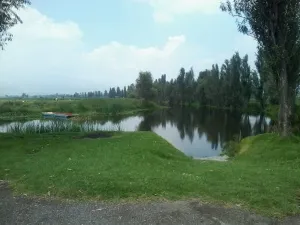

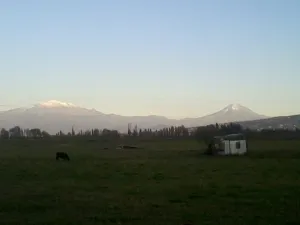

On the first day I visited, we set up a tower for a small wind-turbine, the only source of electricity on the site. It was a fun project, and since then it has been of great service in charging our phones and powering our music. Further visits included a solar-oven workshop, an adobe-making session for one of the buildings, and of course lots of gardening, tree propagation, etc. The Chinampa Tlicuili features many native plants, as well as fruit trees, a greenhouse, a biointensive plot, a mandala garden, a medicinal garden, bee hives, and one of the major attractions, a temazcal, which is a Mexican style sweat lodge.
More Information
Many of these things I want to look at in greater detail in future posts, so keep your eyes peeled, there may be a whole chinampa series coming. Until then, take a look at some of the sources I listed for further information. I especially want to highlight this post by our fellow steemian @jeff-kubits, who's done an excellent job at detailing the chinampas before me. You should also check out the chinampas @aedroberts's building!